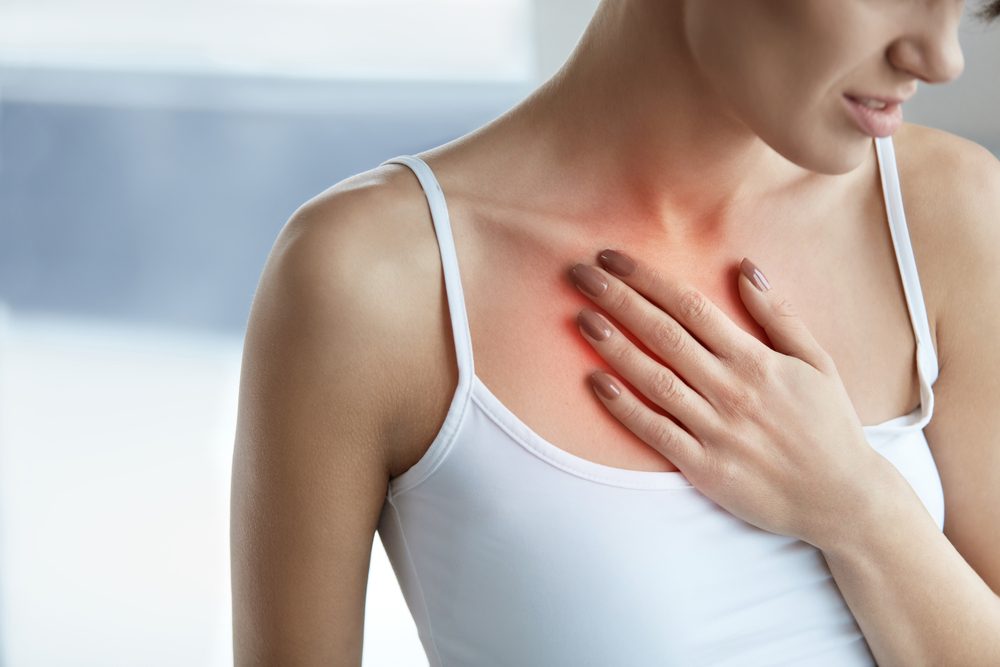Asphyxiation Deaths Due to Angioedema Mostly Caused by Bradykinin-mediated Disease, Study Says

Asphyxiation caused by head and neck angioedema — swelling and fluid accumulation in the deeper layers of the skin — is rare, and most such deaths are due to bradykinin-mediated disease, a French study reported.
In fact, bradykinin-mediated disease is 45 times more likely to be fatal than angioedema caused by mast cell activation, which in most cases consists in allergies, its researchers said.
The study, “Bradykinin mechanism is the main responsible for death by isolated asphyxiating angioedema in France,” was published in the journal Clinical & Experimental Allergy.
While there are several different types of angioedema, the underlying cause generally is one of two factors: the release of histamine by mast cells due to allergies, infections, autoimmune conditions or due to unknown causes; or, excessive bradykinin production in the skin, either by an inherited genetic deficiency or as a medication side effect.
Histamine is a chemical mediator, mainly accumulated and released by mast cells, which plays a crucial part in the inflammatory process. It causes the blood vessels to dilate (open), increasing vessel permeability and lowering blood pressure. Bradykinin is a small protein and inflammatory mediator, which also acts as a potent dilator of certain blood vessels.
In people with angioedema, these molecules turn small blood vessels in the skin or mucous membranes (e.g., mouth, throat, intestines) more permeable, allowing the fluid inside vessels to leak and accumulate in the surrounding tissues, causing swelling or edema.
Mast cell-induced angioedema may be allergic (triggered by foods, medications, insect venom, or rubber) or non-allergic.
Bradykinin-mediated angioedema may be hereditary or acquired, the latter as a side effect of medications called angiotensin-converting enzyme (ACE) inhibitors, or as a consequence of some blood diseases.
Even though the different kinds of angioedema are recognized, there is no epidemiological data comparing the mortality rates between bradykinin- and mast cell-mediated disease.
And while “their clinical aspect is similar, their treatment is radically different,” the researchers noted.
A team at Grenoble Alpes University Hospital sought to determine which type of angioedema was the most common cause of death by asphyxia. In rare cases, angioedema can cause excessive swelling of the upper airways, risking suffocation.
The researchers collected all recorded cases of fatal asphyxiating angioedema in France between 2000 and 2014 — a total of 342 were considered for analysis. Each case was classified according to the most likely underlying cause: histamine (mast cells), bradykinin, or indeterminate.
Overall, the mortality rate from angioedema-related asphyxia was very low, 0.36 deaths per million inhabitants.
But deaths due to bradykinin-mediated disease were more frequent (0.14 per million) compared to mast cell-associated angioedema (0.09 per million). Mortality rates showed that a person with bradykinin-mediated angioedema has a 45-fold higher chance of dying from asphyxia than one whose disease was caused by mast cell activation.
Although mast cell-associated angioedema “is the predominant cause of AE [angioedema], it is rarely fatal” the researchers wrote. Only 0.005% of the patients with that disease type died as a result of asphyxia, and most deaths were due to allergies.
No case of chronic urticaria (hives) or mastocytosis (accumulation of mast cells in skin or internal organs) was found among the studied cases.
“Our study provides reassuring evidence that non-allergenic MC-AEs [mast cell-induced angioedemas] are not deadly whereas BkAEs [bradykinin mediated angioedemas] are,” the team said.
They noted that the study was limited by the high number of angioedema cases of undetermined cause (117), and the lack of a better international classification system for angioedema types.
To confirm their results, the scientists propose that a prospective study of asphyxiation among angioedema patients be conduced and with broader markers of disease types.






